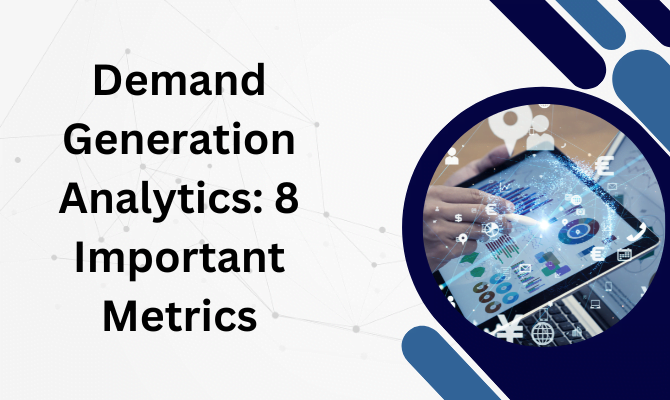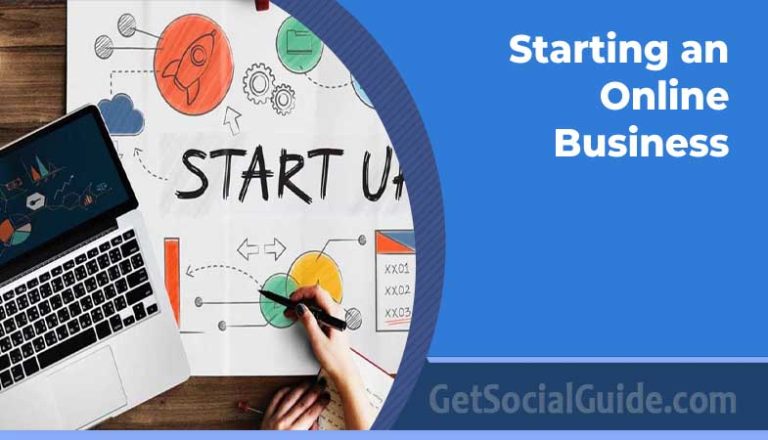Demand Generation Analytics: 8 B2B Metrics That You Should Know
 In business-to-business (B2B) markets, demand generation stimulates and captures interest in a product or service to drive sales pipeline growth. Analytics is critical to effective demand generation, yet many organizations struggle to identify which metrics to track. This article provides an overview of some essential B2B demand generation marketing metrics.
In business-to-business (B2B) markets, demand generation stimulates and captures interest in a product or service to drive sales pipeline growth. Analytics is critical to effective demand generation, yet many organizations struggle to identify which metrics to track. This article provides an overview of some essential B2B demand generation marketing metrics.
Demand Generation Analytics: 8 Important Metrics

Generating demand for your service or product is vital to the triumph of your business. But, knowing which demand generation analytics to track can be complex. Let’s get to the 8 crucial B2B metrics you should know.
1. Closing Percentages
Sales teams in Business-to-Business (B2B) environments are often judged by their closing percentages. This indicator counts how many sales opportunities are successfully turned into sales. The higher the rate, the better the sales team is performing. Several factors can influence closing percentages. The quality of leads generated by:
- Proper marketing.
- The effectiveness of the sales process, and
- The skills of individual salespeople can all play a role.
Closing percentages can be a valuable metric for evaluating sales teams. Still, it is essential to remember that other factors contribute to success in B2B selling. The closing percentage is the number of deals you complete divided by the total number of sales you’ve worked on. If you have mortgage-related services and you want to do the calculation for your mortgage-related service. In that case, the percentage of generating mortgage leads that are closed can be a valuable metric for measuring the effectiveness of a mortgage lead generation strategy.
If you generate mortgage leads and want to calculate the closing percentage, divide the number of closed deals by the total number of generated leads. This will give you a fine idea of how many leads you need to develop to close a certain number of deals. If your closing percentage is low, it may say a problem with your lead generation strategy. You may not be targeting the right audience, or your message may not be compelling. If you’re able to increase your closing percentage, it will have a positive impact on your business. More closed deals mean more revenue and more happy customers.
2. Funnel Conversion Rates
Funnel conversion rates are a metric that gauges the percentage of leads that transform into paying customers. When designing your marketing funnel, it’s essential to remember how many leads you need to convert into customers. It will help you to understand to achieve your business goals. Two key factors affect funnel conversion rates including:
- The quality of your lead capture process and
- Your conversion landing page design.
But, the most significant factor is your offer’s relevance to your target audience. If you can find a way to merge your offer with the needs and interests of your target audience, then you’re likely to see higher conversion rates. To calculate funnel conversion rates, you need to track three things:
- The number of visitors who arrive on your website via organic search results
- The number of visitors who convert into subscribers (by signing up for your mailing list or downloading your product)
- The number of visitors who purchase something from you.
3. Cost of Customer Acquisition
It can be hard to get new customers, and the cost of acquiring them can often be high. There are several ways businesses can try to lower this cost. Still, the most effective approach is usually determined by the specific needs of your business. However, some general costs that will typically be involved in acquiring new customers include the following:
- Marketing expenses: This includes costs such as advertising, marketing collateral, and website design.
- Sales expenses: This includes costs such as commissions and sales bonuses.
- Salary: Employee salaries are usually necessary to hire enough people to support customer acquisition initiatives.
- Facility and equipment costs: These can include things like office space, software licenses, and hardware purchases.
Some standard methods for lowering the cost of customer acquisition include:
- Sponsoring events or giving away free products or services to potential customers.
- Hiring social media managers who can create compelling content that will attract attention from potential customers.
- Creating marketing campaigns to reach a broad audience and build awareness about your company or product.
- Offering discounts or other exclusive deals to lure in more customers.
- Building a solid brand reputation that will make people trust you more than the competition when buying products or services online.
4. Average Deal Size
Average deal size is the size of a particular deal or transaction. It’s used to help businesses and professionals assess the value of potential sales and make better decisions. There are a few ways to calculate average deal size:
- Gross revenue is the total revenue generated by all deals in a given period.
- Net profit: This is the profits earned from all deals in a given period, after considering any expenses incurred.
- Average deal value: This is the average amount paid out by all deals in a given period.
One way to use this information is to see if any patterns emerge over time. For example, maybe there’s a correlation between the size of a deal and the market conditions at the time it’s made. This can help you to anticipate future trends and make informed business decisions.
5. Lifetime Customer Value
Lifetime customer value (LCV) is the total of all a customer’s benefits from a business throughout their lifetime relationship with that business. It includes everything from initial contact through interactions and interactions to the final purchase or service. It’s important to remember that LCV doesn’t just apply to customers who buy products or services from a company; it applies to anyone who interacts with a company in some way. This includes employees, partners, distributors, customers’ friends, and family. There are several ways businesses can calculate LCV.
The most common model uses five dimensions to measure customer value: benefits, satisfaction, loyalty, advocacy, and transaction frequency. Other models use different sizes or combinations of these. Once you’ve calculated LCV for your current customers, it’s helpful to look at how you can improve it further. This might involve changing how you offer your products or services, increasing loyalty, or enhancing satisfaction. In intense dissatisfaction with an existing product or service, you may even want to discontinue it together to focus on improving your flagship offering.
6. Lead Velocity
Lead velocity is a term often used in business to describe how quickly leads are converted into paying customers. It’s usually measured in terms of how many leads are generated per day or week, and it can be used to determine how productive a team is. There are a few things that affect lead velocity. The most crucial factor is the quality of the leads. Your conversion rate will be higher if they’re qualified and relevant.
Lead quality also depends on your marketing strategy. Suppose you use effective lead-generation tactics like email campaigns or social media ads. In that case, you’ll be able to bring in more high-quality leads. And finally, your sales process needs to be efficient and fast enough to convert those leads into customers as soon as possible.
7. Marketing-Attributed Deals
Marketing-attributed deals are transactions where the deal’s value is based on how well the marketing campaign associated with it has performed. For example, suppose a business markets a product advertised on TV. In that case, the TV advertising campaign is responsible for increasing sales by 20%.
The company will receive a payment (the marketing-attributed deal) worth $200 per unit sold. This system promotes fairness and accuracy in business dealings and prevents companies from receiving payments they don’t deserve. It also helps to ensure that businesses are held accountable for their good and bad actions regarding marketing campaigns.
8. Cost per Lead by Lead Source
The cost per lead by the lead source is the amount that a business pays for each lead it acquires from a specific source. This includes receiving the lead and associated costs, such as marketing or customer support. Leads come in different shapes and sizes, so it’s essential to figure out which type of lead generates the most revenue for your business. To do this, you need to calculate the cost per lead by lead source. There are several methods for calculating this:
- The average cost per click (ACPC) is a popular method that calculates the cost per lead based on how much an advertiser spends on clicks relative to the number of leads generated.
- The cost per thousand (CPM) is another popular method that calculates the cost per lead based on how much an advertiser spends on impressions. It’s like how often your ad is shown divided by the number of leads generated.
- The cost per conversion (CPCC) measures how much an advertiser spends on conversions divided by the number of leads generated.
- Other measures, such as the gross margin or net margin percentage, also measure profitability differently.
Conclusion
B2B demand generation marketers need to know the different demand generation analytics metrics to make informed decisions about their strategies. By understanding and tracking these metrics, marketers can optimize their campaigns to better align with their goals and generate more leads that convert into customers.



